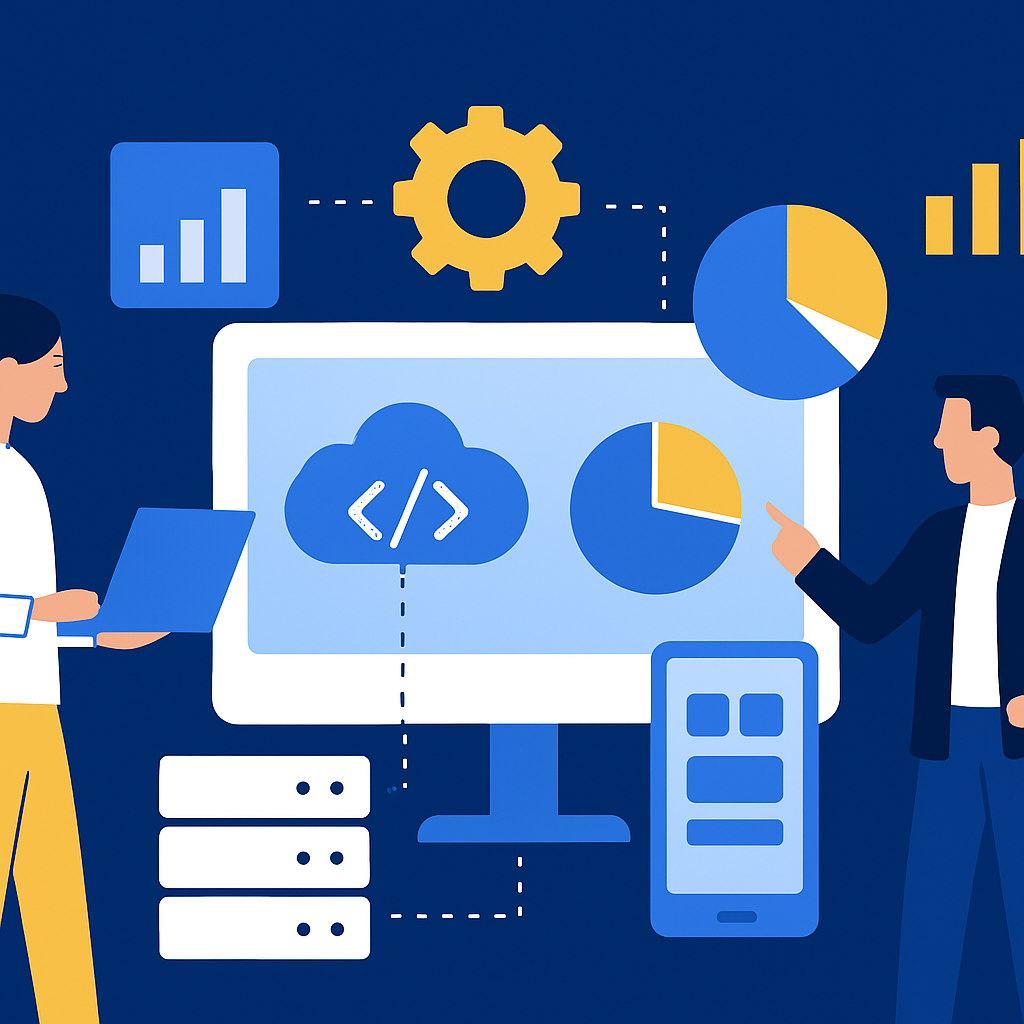
The Healthcare Analytics Challenge
Healthcare organizations generate enormous data volumes—electronic health records, medical imaging, lab results, pharmacy data, billing information, operational metrics. This data holds transformative potential improving patient outcomes, reducing costs, identifying quality issues, optimizing operations, supporting research. Yet most healthcare data remains trapped in siloed systems inaccessible for comprehensive analysis.
Clinical teams need patient insights at point of care. Quality departments require comprehensive views of outcomes and safety metrics. Operations leaders must optimize resource utilization and patient flow. Finance needs to understand cost drivers and reimbursement. Research teams require large datasets for studies. Traditional approaches involve manual data extraction, spreadsheet analysis, and static reports—slow, error-prone, and inadequate for modern healthcare demands.
Power BI integrated with Azure Synapse transforms healthcare analytics creating HIPAA-compliant platform consolidating clinical, operational, and financial data. Clinicians access patient insights improving care decisions. Quality teams monitor outcomes in real-time identifying improvement opportunities. Operations optimize resources based on comprehensive analytics. Research accelerates through accessible data enabling population health management and precision medicine.
Healthcare Analytics Use Cases
Clinical Analytics
Improving patient care through data:
Population Health: Identifying high-risk patients requiring proactive intervention.
Care Gaps: Patients overdue for preventive care or chronic disease management.
Clinical Decision Support: Evidence-based recommendations at point of care.
Medication Management: Polypharmacy analysis and medication adherence tracking.
Readmission Prevention: Predictive models identifying readmission risk.
Quality and Safety Analytics
Monitoring and improving care quality:
Outcome Tracking: Surgical outcomes, complication rates, mortality metrics.
Safety Events: Falls, medication errors, hospital-acquired infections tracking.
Compliance Monitoring: Core measures and regulatory quality metrics.
Peer Comparison: Provider performance benchmarking identifying outliers.
Operational Analytics
Optimizing healthcare delivery:
Capacity Management: Bed utilization, OR scheduling, clinic capacity.
Patient Flow: Emergency department throughput, discharge planning, transfer coordination.
Resource Utilization: Staff productivity, equipment utilization, supply usage.
Patient Experience: Satisfaction scores, complaint analysis, access metrics.
Financial Analytics
Understanding healthcare economics:
Cost Analysis: Cost per procedure, service line profitability, cost drivers.
Revenue Cycle: Billing, collections, denial management, reimbursement analysis.
Payer Mix: Analyzing reimbursement by payer and service.
Value-Based Care: Quality metrics tied to financial outcomes.
Real-World Healthcare Analytics Success
Regional Hospital System: Comprehensive Analytics Platform
A 5-hospital system struggled with data fragmentation across EHR, financial systems, and operational applications:
HIPAA-Compliant Data Warehouse: Azure Synapse consolidating clinical, operational, and financial data with comprehensive security.
Clinical Dashboards: Power BI providing clinicians patient lists, care gaps, and quality metrics.
Operational Intelligence: Real-time dashboards for emergency department, inpatient units, operating rooms.
Quality Scorecards: Automated quality metric calculation and physician scorecards.
Financial Analytics: Service line profitability and revenue cycle dashboards.
Results: Readmissions reduced 18% through predictive analytics and care coordination. OR utilization improved 12% through better scheduling. Revenue cycle collections improved $5M annually through denial analysis. Quality metrics improved across all core measures. Clinician satisfaction improved through actionable insights.
Academic Medical Center: Research Analytics
An academic medical center needed analytics supporting both care delivery and research:
De-Identified Data Sets: Automated creation of de-identified datasets for research complying with HIPAA.
Cohort Identification: Power BI enabling researchers to identify patient populations for studies.
Real-World Evidence: Analysis of treatment effectiveness using operational EHR data.
Clinical Trial Recruitment: Identifying eligible patients for clinical trials.
Results: Research study enrollment increased 35% through better patient identification. Time to create research datasets reduced from weeks to hours. Real-world evidence studies conducted using operational data. Publication output increased through accessible analytics.
Ambulatory Clinic Network: Population Health Management
A primary care network needed population health capabilities for value-based contracts:
Risk Stratification: ML models identifying high-risk patients requiring care management.
Care Gap Closure: Automated identification of patients overdue for preventive care.
Chronic Disease Management: Dashboards tracking diabetes, hypertension, CHF patients.
Outreach Prioritization: Prioritizing patients for proactive outreach based on risk and gaps.
Results: Preventive care rates improved 25% through systematic gap closure. Emergency utilization reduced 15% through proactive chronic disease management. Value-based contract performance improved significantly. Care team productivity improved through prioritized work lists.
Implementation Architecture
HIPAA-Compliant Data Platform
Secure healthcare data foundation:
Azure Synapse Analytics: HIPAA-compliant data warehouse with PHI protection.
Encryption: Data encrypted at rest and in transit using healthcare-grade encryption.
Access Controls: Role-based access with audit logging of all PHI access.
Business Associate Agreement: Microsoft BAA covering Azure services.
Data Integration
Healthcare system connectivity:
HL7 and FHIR: Healthcare standard interfaces for EHR integration.
Azure Data Factory: ETL pipelines moving data from EHR, labs, pharmacy, billing.
Real-Time Streaming: Azure Event Hubs for real-time clinical data.
API Integration: RESTful APIs for modern healthcare applications.
Analytics and BI
Comprehensive healthcare intelligence:
Power BI Service: Cloud-based dashboards and reports with healthcare templates.
Embedded Analytics: Analytics embedded in EHR and clinical workflows.
Mobile Access: Secure mobile access for clinicians and administrators.
Self-Service Analytics: Governed self-service enabling clinical and operational users.
Machine Learning
Predictive and prescriptive analytics:
Azure Machine Learning: ML models predicting readmissions, complications, no-shows.
Cognitive Services: NLP extracting insights from clinical notes.
Responsible AI: Fairness, explainability, and bias detection in healthcare ML.
Implementation Roadmap
Phase 1: Foundation and Compliance (8-12 Weeks)
Deploy HIPAA-compliant Azure infrastructure. Establish security and access controls. Complete Business Associate Agreements. Implement initial EHR integration. Build pilot clinical dashboard.
Phase 2: Clinical Analytics (12-16 Weeks)
Expand EHR data integration. Build comprehensive clinical dashboards. Implement quality and safety analytics. Deploy to clinical users with training.
Phase 3: Operational and Financial (12-16 Weeks)
Integrate operational systems. Build operational dashboards. Implement financial analytics. Cross-functional analytics combining clinical and financial data.
Phase 4: Advanced Analytics (Ongoing)
Predictive modeling for readmissions, complications. Population health management. Research analytics. Continuous expansion of use cases.
Best Practices
Clinical Engagement: Involve clinicians from start ensuring analytics meet clinical needs.
Data Governance: Establish clinical data governance ensuring standardized definitions.
Privacy by Design: Build privacy controls into architecture from beginning.
Actionable Insights: Analytics must drive specific actions not just provide information.
Change Management: Significant training and support required for clinical adoption.
Healthcare-Specific Considerations
Data Quality: Clinical data requires extensive validation and standardization.
Clinician Workflow: Analytics must integrate with existing clinical workflows.
Regulatory Compliance: HIPAA, Meaningful Use, quality reporting requirements.
Interoperability: Healthcare systems integration using standards-based approaches.
Measuring Success
Clinical Outcomes: Readmission rates, complication rates, mortality improvements.
Quality Metrics: Core measure performance and patient safety indicators.
Operational Efficiency: Patient flow, resource utilization, staff productivity.
Financial Performance: Cost reduction, revenue improvement, value-based contract performance.
User Adoption: Clinician and staff use of analytics in daily workflow.
The Healthcare Transformation
Healthcare organizations with comprehensive analytics platforms achieve significant advantages:
Better Outcomes: Data-driven care improving patient health and safety.
Lower Costs: Identifying waste and inefficiency enabling cost reduction.
Quality Improvement: Systematic identification and resolution of quality issues.
Value-Based Success: Meeting value-based care requirements and incentives.
Research Acceleration: Enabling clinical research through accessible data.
Ready to transform healthcare analytics? Contact QueryNow for a Power BI healthcare implementation consultation. We will assess your healthcare data landscape, design HIPAA-compliant analytics architecture, and implement solutions improving patient care, quality, and operational excellence.


